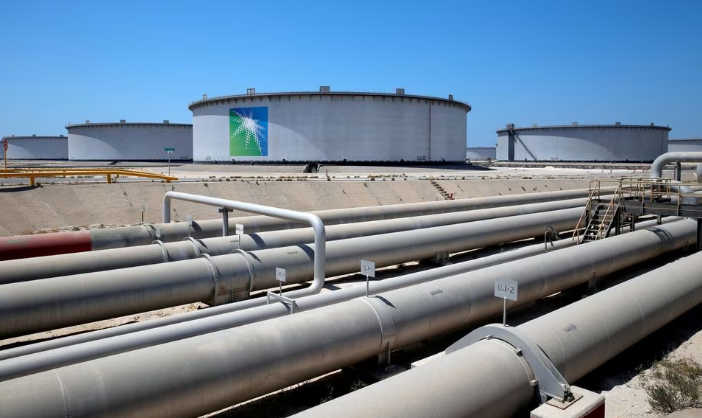
On July 3, Saudi Arabia announced that it would extend its cut of 1 million barrels per day (bpd) in the month of July to August as well, while Russia announced a new cut of 0.5 million bpd for August.
If the cuts are implemented in full, they will reduce global production and expected inventories by as much as 45 million barrels by the end of August, on top of the 30 million Saudi Arabia is already removing in July.
The production cuts would reverse the previous accumulation of inventories, where commercial stocks held in the advanced economies increased by 75 million barrels in the first five months of 2023.
In the financial market, the announcement has lifted front-month futures prices to more than $79 per barrel (48th percentile for all trading days since 2000) up from a recent low of less than $73 (40th percentile) on June 27.
Benchmark prices are now in line with their long-term average since the start of the century once inflation is taken into account, consistent with a market expected to be close to balance through the end of 2023.
The biggest increases have come at the front end of the curve as the march from backwardation to a contango structure evident over the last two months has been partially reversed.
Brent's calendar spread for the fourth quarter reverted to a backwardation of almost $1.20 per barrel on July 11 up from just 4 cents on June 27.
The six-month spread tightened to a backwardation of more than $2.30 (73rd percentile for all trading days since 2000) up from just 8 cents (42nd percentile) on June 27.
Chartbook: Brent prices and spreads
In the physical market, the same moderate tightening is evident in spreads for dated Brent barrels with delivery dates between August and October.
The front-month spread (from August to September) and second-month spread (September to October) are both trading around the 75th percentile.
From a fundamental perspective, the production cuts announced by Saudi Arabia and Russia are expected to remove excess barrels from the market.
They will help counter weaker-than-anticipated economic growth and petroleum consumption from North America, Europe and China in the third quarter.
From a positioning and sentiment perspective, they are also helping counter the buildup of an unusually large number of bearish short positions and giving more inspiration to fund managers trying to become bullish.
The total number of hedge fund short positions across Brent and WTI had reached 239 million barrels by the end of June, up from less than 100 million throughout most of April.
The number of fund short positions was the largest since November 2020, when the coronavirus epidemic was still raging.
Futures buying to cover existing bearish short positions and establish new bullish long positions has helped lift prices.
Since most fund positions are concentrated in nearby months, where liquidity and volatility are greatest, the wave of buying has accelerated the return to a backwardation structure.
Following the announcement, oil traders expect the production-consumption-inventory balance to be moderately tight for the remainder of 2023, assuming global economic growth remains tepid.
If growth accelerates again, the market will tighten rapidly, implying a rapid escalation of prices and spreads in the final part of the year.
The exceptionally low level of hedge fund positions in crude means there is plenty of scope for position-building to anticipate, accelerate and amplify the move.
The combined net position of 258 million barrels on July 3-4 was still in only the 6th percentile for all weeks since 2013 (the 50th percentile would be a position of around 484 million barrels).
If growth remains anaemic, however, Saudi Arabia and Russia will come under pressure to extend the cuts into September and beyond to prevent prices and spreads retreating again.